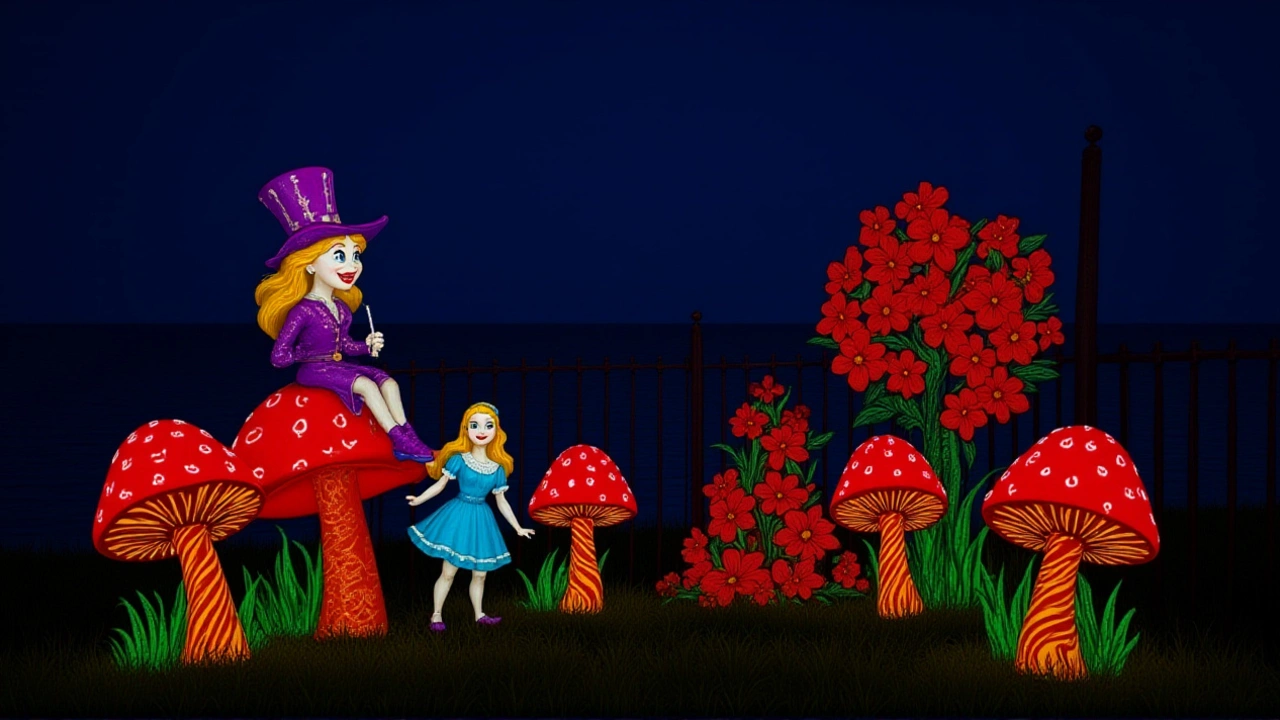When Blackpool IlluminationsBlackpool first lit up the promenade on 18 September 1879, it not only stunned the Victorian crowd but also earned its place as the world’s earliest electric light festival – a title it still guards three‑quarters of a century later.
The dazzling spectacle was powered by eight dynamo‑electric machines built by Dr. Siemens, engineer, fed by 16 Robey engines under a £5,000 grant from the Blackpool Council. Those eight 60‑foot arc lamps, mounted on poles spaced 320 yards apart, poured out the glow of roughly 48,000 candles – what contemporary newspapers called “artificial sunshine.”
It’s odd enough that the whole thing happened a full year before Thomas Alva Edison secured his patent for the incandescent bulb. In other words, Blackpool was already flirting with electric wonder while most homes were still lit by oil lamps.
From Seaside Curiosity to National Phenomenon
Within days, news of the bright seafront spread across Britain. Between 70,000 and 100,000 visitors – a staggering figure for a coastal town of just a few thousand residents – crowded the promenade to witness the novelty. Ticket‑stubs, diary entries, and letters of the era describe crowds gawking at the glowing arches as if they were watching the sunrise in winter.
That early success set a pattern: a September‑October run that would later stretch to 66 days, and eventually, after a pause during the First World War, a permanent seasonal fixture. By 1925 the display had been resurrected and expanded, adding animated tableaux that danced along the cliffs.
Royal Endorsements and Technological Milestones
The first royal nod came in May 1912 when Princess Louise, daughter of Queen Victoria, officially opened a newly lit stretch of the promenade. Her presence turned the lights into a matter of national pride and cemented a tradition of celebrity switch‑ons that would continue for a century.
Three years later, in 1929, all three of Blackpool’s piers were illuminated, and the same year the town introduced an illuminated Gondola tram – “a real sensation,” wrote a contemporary theatre chronicle. Each technical upgrade – from oil‑filled floodlights to neon, then to the LED‑driven megastructure we see today – was celebrated as a proof of the town’s forward‑thinking spirit.
Behind the Scenes: The People Who Keep the Lights Burning
Today, roughly 20 full‑time staff – artists, mechanics, engineers and electricians – labor year‑round to design, install and maintain the more than one million LEDs, micro‑controllers, lasers and video displays that line the five‑mile stretch from Starr Gate to Red Bank Road. The shift from arc lamps to digital light shows has turned the event into a living laboratory for lighting designers worldwide.
Switch‑on ceremonies have become a quirky hobby for the council: while today’s celebrities range from pop singers to TV presenters, the history books note that even a frog and a racehorse have taken the honor. In 1995, “Kermit the Frog” was invited to flick the first switch, and in 1992 the legendary racehorse Red Rum was given the same privilege, a nod to Blackpool’s love of the unexpected.

Economic and Cultural Impact
Beyond the sparkle, the Illuminations have reshaped Blackpool’s economy. What began as a summer seaside attraction now draws visitors from January to May, extending the town’s tourist season by roughly four months. Local hotels report occupancy rates climbing from 45 % in the off‑season to over 80 % during the extended run, a boost that translates into millions of pounds in annual revenue.
Culture‑wise, the lights have become a touchstone for generations. Grandparents recount the first time they saw the glow as children, while teenagers livestream the latest LED installations on social media, using hashtags like #BlackpoolLights to connect with a global audience.
- First lit: 18 September 1879
- Original budget: £5,000 (≈ £600,000 today)
- Current length: 5 miles (8 km) of promenade
- Number of light sources: > 1 million LEDs
- Season length: 100 + days (since 2020)
Future Outlook: What Comes Next?
The council has already mapped out dates through January 2026, with the next switch‑on slated for 30 August 2024. Organizers are experimenting with interactive light installations that respond to visitors’ smartphones, hinting at a future where the audience becomes part of the show.
Environmentalists have raised questions about energy consumption, but the shift to LED and smart‑control systems has slashed electricity use by roughly 70 % compared to the 1990s displays. Ongoing research into renewable‑powered lighting may soon make the Illuminations a model of sustainable spectacle.
All told, what started as eight humble arc lamps has become an enduring emblem of invention, tourism and community pride – a bright reminder that sometimes, the best way to chase darkness is to turn on a few hundred thousand lights.
Frequently Asked Questions
How does the Blackpool Illuminations affect the local economy?
The extended season pushes hotel occupancy from roughly 45 % in winter to over 80 % during the lights, generating an estimated £30 million in additional revenue each year for restaurants, shops and transport services.
What technological upgrades have been made since the original display?
The festival has moved from eight 60‑foot arc lamps to more than a million LED fixtures, integrated with micro‑controllers, laser projectors and video walls. Energy use dropped by about 70 % thanks to smart‑lighting controls.
Why is the Illuminations considered the world’s first light festival?
The 1879 launch predates Thomas Edison’s 1880 incandescent bulb patent, making Blackpool’s electric promenade the earliest organized public celebration of artificial lighting on a large scale.
Who are some of the notable figures who have performed the switch‑on?
Royalty began with Princess Louise in 1912. More recently, pop stars, TV presenters, and even pop‑culture icons like Kermit the Frog and racehorse Red Rum have been invited to flip the first switch.
What environmental steps are being taken to keep the display sustainable?
The shift to LED lighting reduced power consumption dramatically, and the council is piloting solar‑powered control units and exploring carbon‑offset programmes to further minimise the festival’s ecological footprint.

Trenton Whitworth
Hi, I'm Trenton Whitworth, a sports enthusiast with a passion for tennis. I've been studying and analyzing various sports for over a decade, with a particular focus on tennis. I love sharing my knowledge and insights through writing and have contributed to several publications. My goal is to help others better understand the game and inspire them to enjoy it just as much as I do. I believe that staying active and engaged in sports can lead to a healthier and happier life.